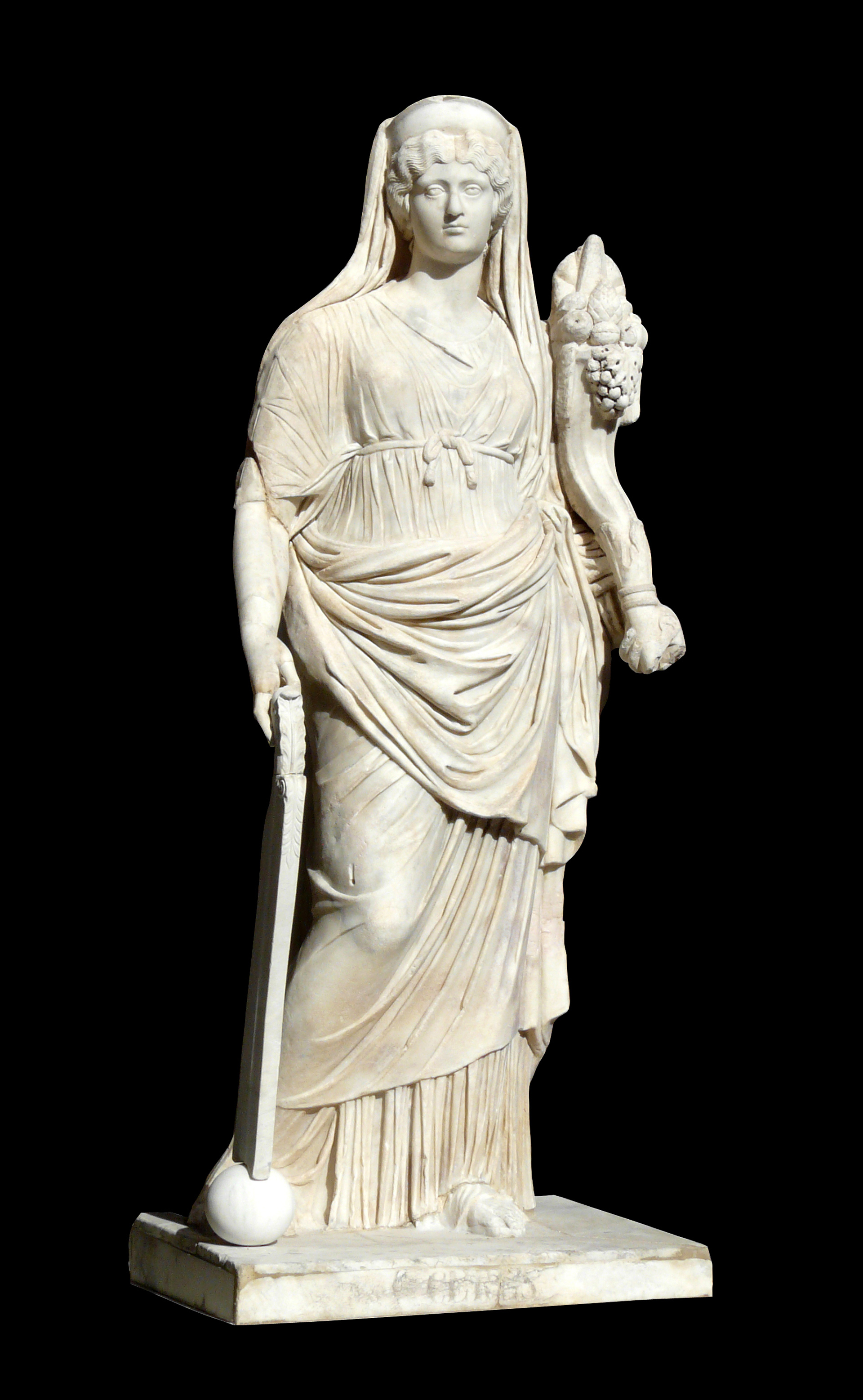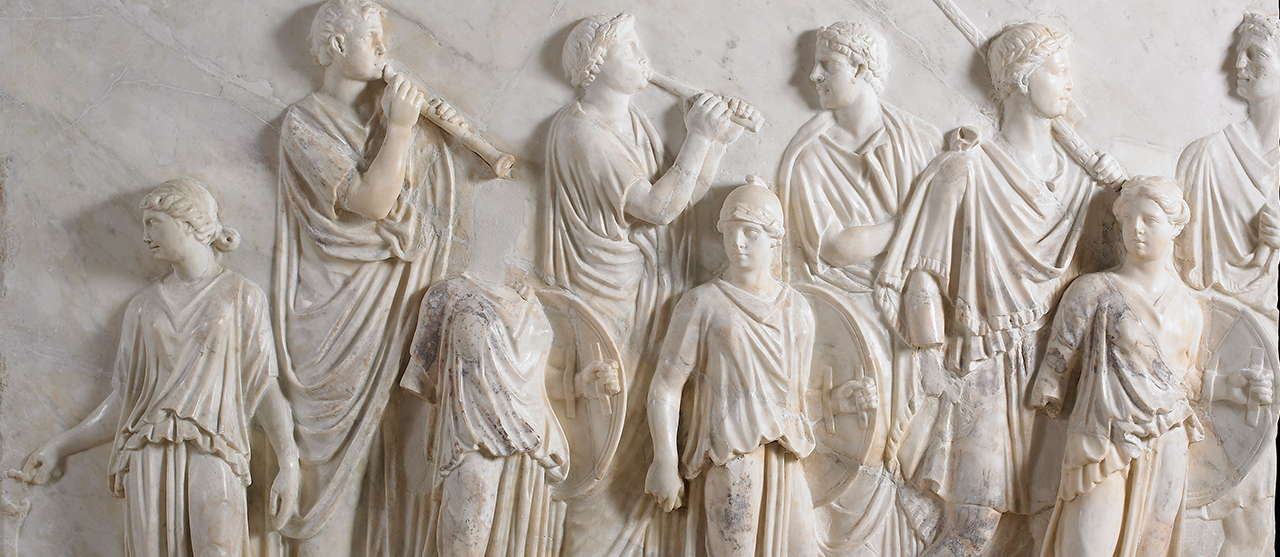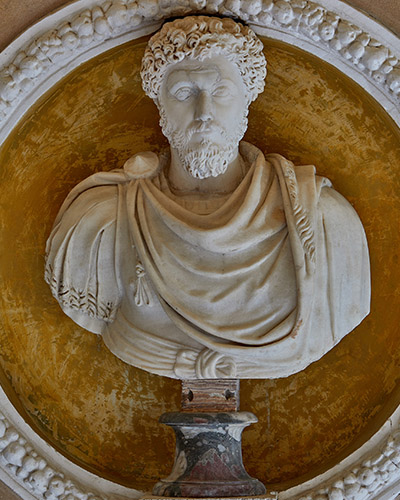Larger than life-size statue carved from a single block of marble of a female figure wearing a jiton with a high cincture and a cloak, which forms a characteristic triangular fold in front of the hip. Her attributes, the horn of plenty, from which she distributes the goods she distributes, the rudder, with which she directs chance, and the globe, symbol of her instability, indicate that she represents the goddess Fortune.
However, the head is clearly a portrait of Faustina Minor, corresponding to the type created on the occasion of the accession to the throne of Marcus Aurelius or on the occasion of her second delivery of twins, both events having taken place in 161 A.D. However, the idea that this depiction is a portrait of Faustina Minor is not to be confused with the type created on the occasion of the accession to the throne of Marcus Aurelius. in formam dearumThe fact that the statue, with divine attributes and wearing sandals, was made during the empress's lifetime is difficult to sustain, so it is more plausible to date the work after Faustina's death and its consecration in 176 AD.
The inscription "Ceres" on the pedestal indicates that the representation of this goddess, which today is exhibited in a loggia in the Jardín Grande of the Casa de Pilatos, known as the "Cenador", was in the corner of the courtyard now occupied by this statue. On the other hand, a drawing by Joaquín Guichot places this Faustina Minor at the back of the loggia leading to the Jardín Grande.






